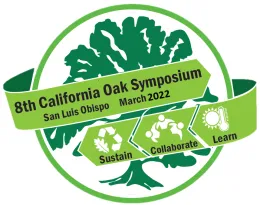#38

Plasticity Drives Geographic Variation and Trait Coordination in Blue Oak Drought Physiology
Leander D.L. Anderegg, UC Santa Barabara, Ecology, Evolution & Marine Biology
Robert P. Skelton, South African Ecological Observatory Network, Cape Town; Jessica Diaz, UC Berkeley, Integrative Biology; Prahlad Papper, UC Berkeley, Integrative Biology; David Ackerly, UC Berkeley, Environmental Science, Policy & Management; Todd Dawson, UC Berkeley, Environmental Science, Policy & Management
Two decades of widespread drought-induced forest mortality events on every forested continent have raised the specter of future unpredictable, rapid ecosystem changes in 21st century forests. Yet our ability to predict drought stress, much less drought-induced mortality across the landscape remains limited. This uncertainty stems at least in part from an incomplete understanding of within-species variation in hydraulic physiology, which is the complex result of genetic differentiation among populations (ecotypic variation) and phenotypic plasticity in response to growth environment. We examined among-population genetic differentiation in a number of morphological and hydraulic traits in California blue oak (Quercus douglasii) using a 30-year-old common garden. We then compared this genetic trait differentiation and trait-trait integration to wild phenotypes in the field from the original source populations.
We found remarkably limited among-population genetic differentiation in all traits in the common garden, but considerable site-to-site variation in the field. However, it was difficult to explain trait variation in the field using site climate variables, suggesting that gridded climate data does not capture the drivers of plasticity in drought physiology in this species. Moreover, population mean trait values were uncorrelated in the garden versus the field. Trait-trait relationships were also considerably stronger in the field than in the garden, particularly links between leaf morphology, leaf hydraulic efficiency and stem hydraulic efficiency. Indeed, while twelve of 45 potential trait-trait relationships showed significant wild phenotypic correlations, only four relationships showed both genetic and phenotypic correlations, and five relationships showed significantly different genetic and phenotypic correlations. Collectively, our results highlight limited ecotypic variation in drought-related physiology but considerable geographic variation in physiology and phenotypic integration in the wild, both driven largely by plasticity.
